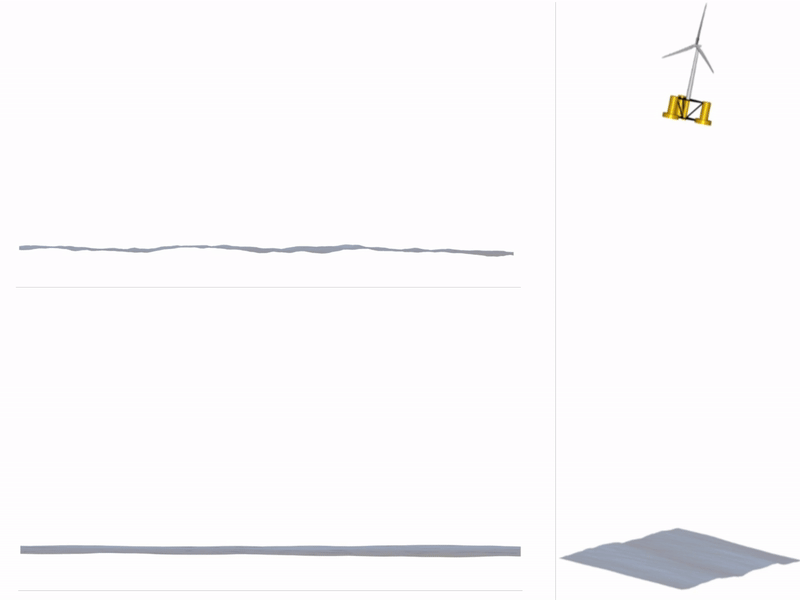Forum
Center of Elasticity and Shear Cross-Section Beam Properties
Quote from Brian on 15. February 2023, 22:02Hello,
As my group has been working through the list of Cross-Section Beam Properties for our VAWT structure file, we have struggled to figure out how to calculate two properties, the Center of Elasticity and Shear values. When I referenced the structure file for the downloadable Sandia VAWT, the values for these two groups are all 0. Then in the documentation example of the structure file, these values are not all 0. Another reason we are stumped is that these values seem as if they should have units of length, but in the documentation and the Sandia structure file, it is dimensionless. Can anyone explain why these values are dimensionless in the QBlade documentation but in the HAWC2 manual, they have units of meters?
If anyone can lead us to where we can find out how to calculate these two values or if they should be 0, it would be greatly appreciated.
On a side note, another value we are struggling with is the rayleigh damping constant. Can BECAS blade analysis software calculate this value? If not, what can we use to calculate this value for our blades and other components within our turbine?
Thank you for your time and any response would be appreciated.
Hello,
As my group has been working through the list of Cross-Section Beam Properties for our VAWT structure file, we have struggled to figure out how to calculate two properties, the Center of Elasticity and Shear values. When I referenced the structure file for the downloadable Sandia VAWT, the values for these two groups are all 0. Then in the documentation example of the structure file, these values are not all 0. Another reason we are stumped is that these values seem as if they should have units of length, but in the documentation and the Sandia structure file, it is dimensionless. Can anyone explain why these values are dimensionless in the QBlade documentation but in the HAWC2 manual, they have units of meters?
If anyone can lead us to where we can find out how to calculate these two values or if they should be 0, it would be greatly appreciated.
On a side note, another value we are struggling with is the rayleigh damping constant. Can BECAS blade analysis software calculate this value? If not, what can we use to calculate this value for our blades and other components within our turbine?
Thank you for your time and any response would be appreciated.
Quote from David on 16. February 2023, 14:17Hi Brian,
you find the info for the sectional properties in QBlade here: https://docs.qblade.org/src/user/turbine/structure.html#blade-and-tower-structural-data-tables.
A value of zero means that the positions are located at the half chord position of the airfoil (see image). The difference between these properties in HAWC2 and QBlade is that in QBlade these values are normalized by the local chord length.
The shear center value is not used for Euler beams and will only have an effect after Timoshenko beams have been added by us. If you daont have a way to obtain the exact elastic center position of the cross section its a good first assumption to leave this value to zero, especially for a VAWT blade.
Regarding the Rayleigh damping coeffficient: In QB we are using mass proportional Rayleigh damping. Info on how this is connected with the critical damping of a structural part can be found here: https://wiki.csiamerica.com/display/kb/Damping+coefficients. A typical value for the critical damping of a WT blade is around 3%.
BR,
David
Hi Brian,
you find the info for the sectional properties in QBlade here: https://docs.qblade.org/src/user/turbine/structure.html#blade-and-tower-structural-data-tables.
A value of zero means that the positions are located at the half chord position of the airfoil (see image). The difference between these properties in HAWC2 and QBlade is that in QBlade these values are normalized by the local chord length.
The shear center value is not used for Euler beams and will only have an effect after Timoshenko beams have been added by us. If you daont have a way to obtain the exact elastic center position of the cross section its a good first assumption to leave this value to zero, especially for a VAWT blade.
Regarding the Rayleigh damping coeffficient: In QB we are using mass proportional Rayleigh damping. Info on how this is connected with the critical damping of a structural part can be found here: https://wiki.csiamerica.com/display/kb/Damping+coefficients. A typical value for the critical damping of a WT blade is around 3%.
BR,
David
Uploaded files:- You need to login to have access to uploads.


